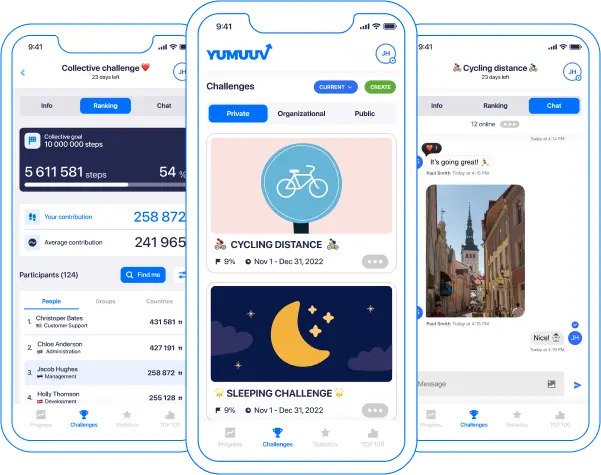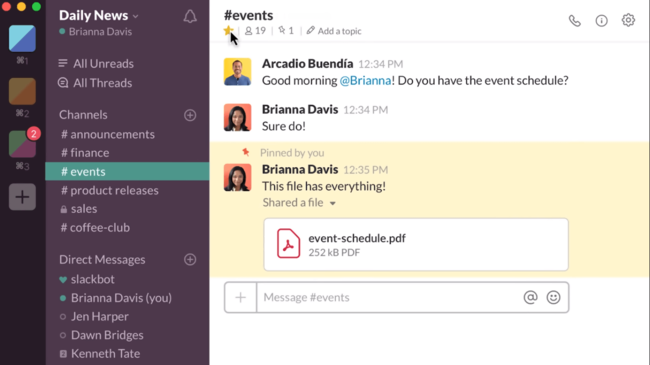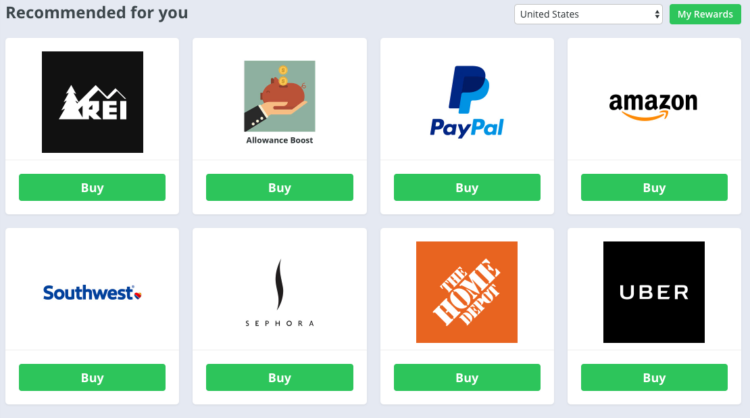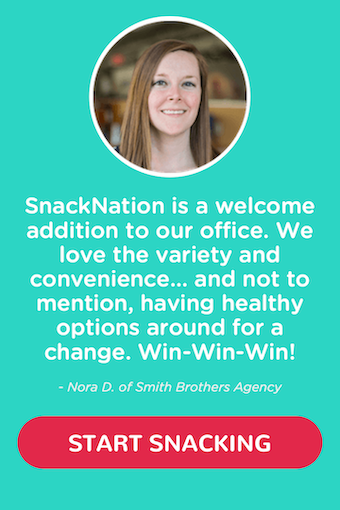When the clock ticks toward the end of a workday, do your employees power through that last hour with the same zeal as the first, or do they watch the seconds tick by?
The difference lies in how engaged they are with their work—a factor that is shaped significantly by the best employee engagement programs.
Picture a workplace where employee suggestions are heard loud and clear by HR, creating an environment filled with recognition and full of ideas to keep employees involved and motivated.
Such a space doesn’t just keep employee turnover at bay; it turns the tides towards a surge in employee retention.
Employee engagement programs boost employee morale, create a positive work environment and improve employee experience.
When people are excited about their jobs, this leads to less absenteeism, especially if a company really pays attention to their feedback. Employee engagement surveys and employee feedback help create a work environment that values hard work, supports successful teams, and constantly checks in with employee needs.
The key step is to actually do something with this feedback to highlight high-performing employees, stop burnout before it happens, and ensure HR professionals look after everyone’s well-being.

We’ve carefully curated an impressive lineup of top-tier employee engagement ideas and initiatives, rewarding incentives, collaborative team-building exercises, and strategic action plans designed to energize your workplace and cultivate a thriving company culture.
So, let’s explore these effective employee engagement programs that show what it truly means to master the art of a good work life.
What is an Employee Engagement Program?
An employee engagement program is a comprehensive strategy employed by businesses to foster a work environment where employees feel a deep connection to their roles and the company.
It encompasses various initiatives aimed at boosting job satisfaction, enhancing workplace morale, and encouraging staff to be fully involved and enthusiastic about their work.
Such programs focus on recognizing employee achievements, fostering professional and personal growth, soliciting and acting upon employee feedback, and promoting a positive corporate culture.
By investing in these areas, companies aim to not only retain talent but also to inspire their workforce to perform at their best, leading to improved productivity and business outcomes.
Best Employee Engagement Programs
1 Personalized Recognition Programs
Employee engagement skyrockets when recognition is personalized and meaningful. A well-crafted program celebrates individual achievements in a way that resonates personally with each employee.
Personalized recognition is about making employees feel special and valued for their unique efforts, not just handing out a one-size-fits-all award like ‘Employee of the Month’.
When you celebrate the specific things each person brings to the table as well as employee milestones, it means more and encourages them to put in even more effort. People work harder and feel more connected to their job when they see that their individual work doesn’t go unnoticed.
Nectar excels in this realm. This platform specializes in peer-to-peer recognition and employee recognition that can be tailored to the individual. By using Nectar, companies can allow employees to celebrate their colleagues’ unique contributions in real-time, with specific badges, rewards, or notes of appreciation that reflect the distinct value each person brings to the team.
2 Engagement Surveys and Actionable Insights
Engagement and pulse surveys are tools used to gauge employee sentiment and gather feedback on various aspects of their work life. The key is not just to collect data, but to act on it.
These surveys can uncover hidden issues and highlight areas of success. They’re a starting point for making meaningful changes that drive engagement.
3 Custom Awards for Special Achievements

Custom awards are personalized trophies or mementos designed to commemorate significant milestones or achievements within a company.
These awards are a tangible expression of appreciation for extraordinary work. Unlike standard awards, custom ones can reflect the nature of the achievement and the personality of the recipient, making them much more meaningful.
Stadium has made a name for itself by partnering with Amazon Business to provide a vast selection of rewards. Companies can use Stadium to design and distribute custom awards that are as unique as the achievements they’re recognizing, ensuring that employees feel truly valued for their specific contributions.
4 Health and Wellness Challenges
Employee health and wellness challenges are initiatives that encourage employees to engage in healthier behaviors, such as exercise, meditation, or proper nutrition.
Such challenges can increase engagement by promoting teamwork, improving physical and mental health, and reducing stress. They show that a company cares about its employees beyond their work output.
YuMuuv can be effectively used to set up and monitor health and wellness challenges. It blends these challenges into its recognition and rewards system, allowing companies to motivate and honor the adoption of healthy practices within their teams. This integration aids in building a workplace atmosphere that prioritizes well-being and actively engages its employees.
5 Continuous Learning Opportunities

Providing continuous learning and professional development opportunities means investing in the personal and professional growth of employees through workshops like Microsoft MS-102 Dumps, courses, seminars, and training programs.
This approach keeps the workforce agile and innovative. It’s a signal that the company is invested in its employees’ future, which can greatly increase loyalty and engagement.
6 Team Building Retreats

Team building activities and retreats are off-site events designed to foster teamwork and collaboration through various activities and shared experiences.
Retreats are a good idea because they take employees out of the day-to-day as well as work week grind and put them in new environments where they can connect on a deeper level. This can lead to stronger bonds and improved collaboration at work.
7 Peer Mentoring Programs

Peer mentoring programs pair less experienced employees with more experienced ones for guidance and support.
It’s beneficial because it promotes knowledge sharing and a sense of belonging. Both mentors and mentees often report higher levels of engagement and job satisfaction.
8 Gamified Performance Challenges
 Gamification involves applying game-design elements to non-game contexts, such as sales or customer service goals.
Gamification involves applying game-design elements to non-game contexts, such as sales or customer service goals.
It’s effective because it taps into the innate human love of play and competition. Leaderboards, progress tracking, and rewards can all contribute to a more dynamic and engaging work environment.
9 Flexible Work Schedules
 Flexible work schedules offer employees control over when and where they work, within certain guidelines.
Flexible work schedules offer employees control over when and where they work, within certain guidelines.
This kind of flexibility is increasingly important to workers. It shows trust and respect for their time management skills and personal lives.
10 Transparency and Open Communication Channels
Transparency in the workplace means open, honest communication between management and employees about company performance, decisions, and challenges.
It builds trust and a sense of inclusion, making employees feel they are a valued part of the organization.
Slack can be used to promote transparency by allowing employees to communicate with each other in closed or open chat rooms. It is easy to download, set up on your computer, and connect distributed teams in a secure workspace.
11 Inclusive Culture Committees

Inclusive culture committees are groups of employees who work together to ensure that all voices within the company are heard and valued.
They can increase engagement by fostering a sense of belonging among employees. An inclusive environment where diverse perspectives are celebrated can lead to more innovative and engaged teams.
12 Financial Wellness Programs
 Financial wellness programs provide employees with resources to manage their finances effectively, such as retirement planning or budgeting workshops.
Financial wellness programs provide employees with resources to manage their finances effectively, such as retirement planning or budgeting workshops.
Employees are more engaged when they’re not stressed about money. Providing them with tools to manage their financial health can lead to a more focused and productive workforce.
13 Social Impact Initiatives
 Social impact initiatives involve employees in charitable work or sustainability efforts that reflect their values and the company’s corporate social responsibility.
Social impact initiatives involve employees in charitable work or sustainability efforts that reflect their values and the company’s corporate social responsibility.
Engagement increases when employees work towards a cause they care about. It provides a sense of purpose beyond daily work tasks.
14 Micro-Bonuses for Daily Wins
The concept of micro-bonuses involves giving small, instant bonuses for daily achievements, turning everyday successes into motivators.
Micro-bonuses are powerful because they provide immediate gratification for a job well done; thus boosting employee engagement. Unlike traditional bonuses that are often annual, these are timely, reinforcing positive behavior as it happens. This instant feedback loop encourages employees to continue performing at their best.
Bonusly is the perfect employee engagement and recognition platform for implementing a micro-bonus strategy. Bonusly allows employers to give small, monetary tokens of appreciation for daily accomplishments. This system not only boosts morale but also fosters a culture of continuous recognition and feedback.
15 Internal Career Fairs
 Internal career fairs showcase available positions and advancement opportunities within the company to current employees.
Internal career fairs showcase available positions and advancement opportunities within the company to current employees.
They encourage employees to aspire to grow within the organization rather than look elsewhere. Seeing a clear path for advancement can be a powerful motivator.
Suitable employee engagement software can be integrated into these events to allow employees to recognize their colleagues who take steps to advance their careers, thus promoting a culture of growth and support.
Benefits of Employee Engagement Programs

Employee engagement programs can significantly enhance a business’s performance and culture. Here are some key benefits that these programs can deliver:
✅ Increased Productivity
Engaged employees are more invested in their work, leading to greater effort and output. They often go above and beyond their job requirements to contribute to the company’s success, driving overall productivity.
✅ Improved Quality of Work
When employees are engaged, they typically take greater pride in their work. This can lead to higher quality output and fewer errors, as employees are more conscientious about the work they deliver.
✅ Enhanced Employee Retention
Engagement programs can help reduce turnover by fostering a workplace where employees feel connected and valued. This can lower the costs and disruptions associated with recruiting and training new staff.
✅ Better Customer Service
Engaged employees are often more responsive and proactive in addressing customer needs, leading to improved customer satisfaction and loyalty.
✅ Higher Employee Satisfaction
These programs can contribute to a more satisfying and fulfilling work experience for employees, as they feel their contributions are recognized and their development is supported.
✅ Stronger Company Culture
Employee engagement programs help build a positive company culture by aligning employees with the organization’s values and goals, fostering a sense of community and shared purpose.
✅ Increased Innovation
Engaged employees are more likely to contribute ideas and innovation because they are committed to the success of the company and feel their input is valued.
✅ Healthier Employees
Many engagement programs include wellness initiatives that can lead to healthier lifestyles for employees, reducing absenteeism and healthcare costs.
✅ Attracting Talent
Companies with strong employee engagement programs are often seen as desirable places to work, helping to attract top talent in competitive job markets.
✅ Financial Performance
There’s a well-documented correlation between employee engagement and financial performance. Engaged teams can often contribute to improved sales, higher profits, and growth in shareholder value.
Challenges of Implementing Employee Engagement Programs

Employee engagement programs can offer a host of benefits, from improved productivity to increased employee retention. However, these programs are not without their challenges. Here’s an exploration of some of these challenges:
❗️Measuring ROI
The return on investment (ROI) of engagement programs can be difficult to quantify. Leadership often requires concrete data to continue funding such initiatives. Challenges arise in pinpointing exact figures as benefits of employee engagement, like increased morale, are often intangible.
❗️One-Size-Fits-All Approach
Engagement programs that don’t consider individual employee needs, preferences, and motivations can fall flat. A generic approach can lead to disengagement, as employees may feel that the programs are not relevant to them or are simply corporate check-box activities.
❗️Maintaining Momentum
Launching an engagement program with enthusiasm is one thing, but keeping that excitement and participation high over time is another. Employees can become jaded if initial promises don’t translate into long-term commitment, resulting in cynicism towards future initiatives.
❗️Alignment with Company Culture
There can be a mismatch between the engagement programs and the company’s core values and culture. If employees see a disconnect between the two, they may question the authenticity of the program, which can undermine trust in the organization.
❗️Communication Breakdowns
Failure to communicate the benefits and goals of engagement programs can result in low participation. Employees need to understand the ‘why’ behind programs to fully engage with them.
❗️Feedback Fatigue
While regular feedback is crucial, too much of it or poorly executed feedback can tire employees, leading to disengagement. Employees might feel overwhelmed or undervalued if they are constantly asked for feedback without seeing any resultant changes.
People Also Ask These Questions About Employee Engagement Programs
Q: How can employee engagement programs enhance work-life balance?
- A: Employee engagement programs often incorporate flexible working arrangements, wellness activities, and time-off policies that acknowledge the importance of an individual’s life outside of work. This not only shows that the company values their team members’ well-being but also supports engaged employees in achieving a healthier balance between their professional and personal lives, which is especially important in today’s dynamic work environments, including remote work.
Q: Why is onboarding important for new hires in relation to employee engagement?
- A: Onboarding is a critical process for integrating new employees into a company. It sets the stage for their future engagement by helping them understand company values, introducing them to development opportunities, and building connections with other team members. A strong onboarding experience can ensure that new hires feel welcomed and prepared, which can positively impact their engagement levels from the start.
Q: How do employee engagement programs contribute to the retention of new employees?
- A: Engagement programs are vital for new hires because they establish a sense of belonging and provide clear pathways for career development. By actively engaging new employees through well-structured onboarding, mentorship, and regular check-ins, companies can reduce turnover rates and help new team members assimilate effectively into the company culture.
Q: What role does career development play in employee engagement?
- A: Career development is a cornerstone of employee engagement. When employees see that there are clear and attainable development opportunities within the company, they are more likely to be engaged and motivated. Engagement programs that include professional growth plans, training sessions, and promotion tracks demonstrate a company’s investment in its team members’ future success.
Q: How do remote work options impact employee engagement programs?
- A: Remote work has become a key component of employee engagement, with many programs now including provisions for flexible locations. These options can lead to greater job satisfaction as employees can manage their professional responsibilities alongside personal commitments more effectively. Engagement strategies now frequently address how to keep remote employees connected and integrated with their teams through virtual collaboration tools and regular communication.
Q: Can employee engagement programs assist with the personal goals of team members?
- A: Yes, many engagement programs offer support for personal goal achievement as part of holistic career development. This might include offering courses not just in job-specific areas but also in broader skills like time management or personal finance. Programs that align with personal as well as professional goals can deeply enhance an employee’s commitment to the company.
Q: How do company values intersect with employee engagement strategies?
- A: Company values are at the heart of any effective employee engagement strategy. When employees’ personal values resonate with those of the company, engagement levels are likely to be higher. Programs that highlight and embody core values through everyday actions, recognition systems, and company rituals help employees feel a part of something larger than themselves.
Q: What metrics can be used to measure the success of employee engagement programs?
- A: Success metrics for employee engagement can include quantitative data such as turnover rates, productivity levels, and survey scores, as well as qualitative feedback about employee satisfaction and morale. Companies often use a combination of these metrics to measure their engagement programs and assess how well they are fostering the commitment and enthusiasm of their employees.
Q: How often should a company update its employee engagement strategy?
- A: An employee engagement strategy should be dynamic, adapting to changes within the company and its workforce. Regular reviews, at least annually, are important to ensure the strategy remains relevant and effective. However, key triggers such as significant organizational changes, feedback from engagement surveys, or shifts in work patterns (like increased remote work) may necessitate more frequent updates.











